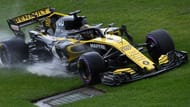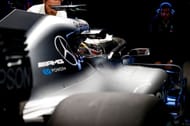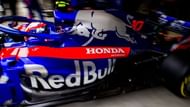Examining the usage of power units can help understand which manufacturers are ahead and which one are falling behind in terms of reliability. The powertrain elements include the internal combustion engine (ICE), the turbo charger (TC), motor generator unit by heat (MGU-H) and the kinetic motor generator unit (MGU-K).
In the 2018 F1 season, drivers could use 3 ICE, 3 TC, 3 MGU-H, 2 MGU-K. Since Ferrari, Mercedes, and Renault supplied 3 teams each, the maximum units permissible before grid penalties came into effect were 18 ICE, 18 Turbo Chargers, 18 MGU-Hs, and 12 MGU-Ks.
Meanwhile, Japanese manufacturers Honda supplied only Scuderia Toro Rosso and their allotted engine parts were a third of the other three constructors. Ferrari, Mercedes and Renault, all had their works team and 2 customer teams to supply for the year. The data points to clear converge of performance output between the top 2 sides. Overall, the performance of the usage rate of the components of the powertrain suggests that Ferrari had the most reliable package. Here's how:
# 1 Internal Combustion Engines
ICE: Mercedes = 19, Ferrari = 19, Renault = 26, Honda = 16
This year, the Ferrari horsepower finally caught up and even surpassed the Mercedes after trailing in power output for long. For Mercedes, Valtteri Bottas used more than his quota of 3, with Lewis Hamilton, Sergio Perez, Esteban Ocon, Sergey Sirotkin and Lance Stroll all having a reliable run with their Mercedes engines.
Marcus Ericsson for Sauber used 4 Ferrari engines. Renault were plagued with blown engines with the factory team using 9, the same as Red Bull duo of Verstappen and Ricciardo, while McLaren used 8 instead of their allotted 6. Honda, which ran this year effectively as a test year smoked through 16 engines, evenly split between Pierre Gasly and Brendon Hartley. While Honda gained speed, the lack of reliability was painfully obvious. Renault engines made incremental gains, but no quantum leaps.
#2 Turbo Charger

Turbo: Mercedes = 19, Ferrari = 18, Renault = 28, Honda = 16
Red Bull were severely affected by the tightly packed engine to suit their aerodynamics and used 10 turbo chargers, 6 for Daniel Ricciardo's car and 4 for Verstappen's. Renault used up the same number - 6 for Hulkenberg and 4 for Sainz.
Alonso and Vandoorne used 4 each to make a total of 28 turbo chargers. The turbo chargers of the Renault engines had a tough time in each of the three teams running them, unlike those of the Ferrari run cars who stuck to their limit of 18.
Ferrari ended up with the most reliable turbo charger this year. Bottas was the sole driver to use an extra turbo for his Mercedes. As for Honda, Gasly and Hartley went through 8 turbos each, incurring more grid penalties as they ran tests after tests to catch up with the rest of the field.
#3 Motor Generator Unit | MGU-H

MGU-H: Mercedes = 19, Ferrari = 18, Renault = 26, Honda = 16
The MGU-H was decided to be discarded for the 20121 regulations, but the FIA finally reversed their own decision to retain it. The MGU-H is an energy recovery system; a motor generator unit which harvests thermal energy from the exhaust via the turbocharger. IMGU-H provides 60% of the electric energy used to power the energy recovery system.
It is a key piece of technology that has been developed and which has road relevance. Ferrari again had the best MGU-H unit, while Renault and Honda were way off their targets. Interestingly, the slowest of the Renault powered car - McLaren used just one extra unit while Red Bull and the Renault works team each had to get 9 to get through the season.
That is 50% more than the allotted number. Honda overshot their limit by 10, using 16 to service the two Toro Rossos.
#4 Kinetic Motor Generator Unit | MGU-K

MGU-K: Mercedes = 13, Ferrari = 12, Renault = 23, Honda = 13
Earlier known as Kinetic Energy Recovery System (KERS), the MGU-K is just like MGU-H. It is a motor generator unit which harvests kinetic energy, through engine braking. The MGU-K is capable of producing 160bhp, around almost the entire lap.
Mercedes and Ferrari were on point with their usage, Renault doubled their count with Ricciardo, Alonso, and Hulkenberg using 4 each during the season. Even Sainz, Verstappen and Vandoorne used more than the 2 MGU-Ks sanctioned.
Honda had to provide Hartley with a record 7 units of MGU-Ks for his Toro Rosso. This count makes for a very sorry reading for both Renault and Honda who are lacking in internal combustion engine power and also the recovered energy output too.
Honda did slip under the radar with a more accommodating customer in Toro Rosso as compared to a high profile McLaren the years before, but next year, Red Bull will demand more. It is a massive challenge for the largest engine manufacturer in the world to overcome.
